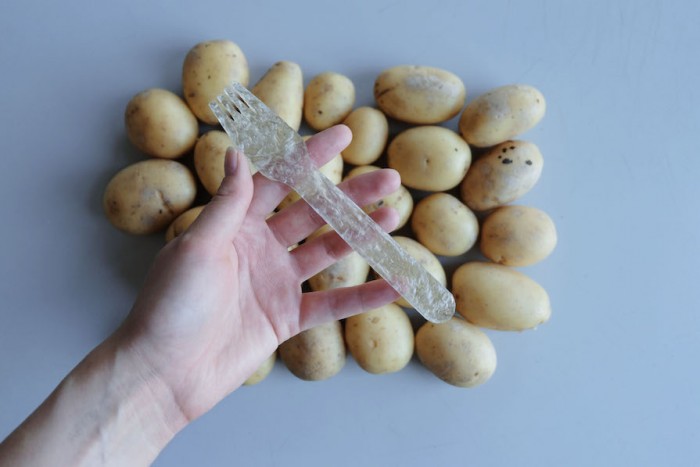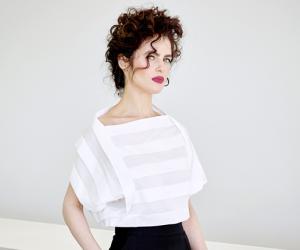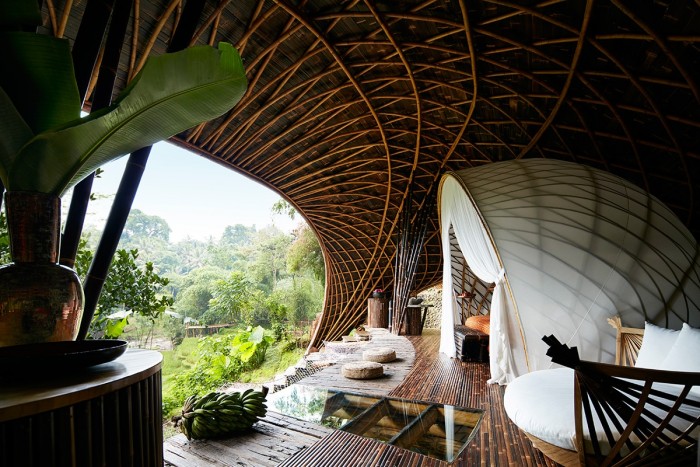As one of the editors at Design Indaba, What I love to do at the end of each year is pick out some of the stories that I think deserve a little bit of extra love.
Between the mammoth Design Indaba Conference and the subsequent projects it births - like the Arch for Arch monument and Es Devlin’s first sculpture in Africa, the Zoetrope - the stories we write about the creatives we uncover have a tendency to fall by the wayside.
So today, I’ve taken some time to put back into the spotlight the investigations our editorial team have done on the African continent and abroad that look at some of the most innovative uses of the most unlikely materials.
Likely forgotten, shut away in the history books, or tossed away as waste, these materials are given new, valuable direction from the designers who adore them.
Take plastic. I know you already know the stats - the dying whales and the greying coral reefs - so I won’t bore you with all of that. Instead, I want you to think about how plastic is manufactured and ask yourself: Could that be changed by a potato?
It’s a strange, serpentine tangent, I know. But it’s one that Pontus Törnqvist, a student at the Industrial Design at Lund University, took in his stride not too long ago.
Looking at the fast-food industry's excessive use of disposable plastic, Törnqvist decided to create a bio-degradable, plant-based alternative using the spud.
It comes down to two ingredients: water and potato starch, says Törnqvist. “First, the exact amount of both ingredients are mixed together, and then heated until the fluid thickens. It is then poured into moulds and exposed to heat, until it becomes a dry compact piece.
Depending on how much fluid is poured into a mould, the material can either become a thick, tough piece, or a thin film,” he said.
While Potato Plastic started as a graduation project, Törnqvist hopes it will become a one-use staple all over the world, setting back the impact of fast-food packaging and cutlery waste considerably.

Innovations like Törnqvist’s might seem like a blip on the global warming radar when one considers the monopoly corporations behind much of the planet’s impending demise, from the oil refineries to the other manufacturing giants.
And one must ask the question: Why? Why create new ways to rid ourselves of plastic waste when as much as 70 per cent of the waste we produce comes from corporations that are unlikely change any time soon.
We don’t have the exact answer yet, but we do know the strategy cannot be to just sit back and let it happen. We’re optimistically looking forward, and designing for a future we’ll have a hand in creating one way or another.
Take Neri Oxman’s work at the Mediated Matter Group at the Massachusetts Institute of Technology (MIT). Oxman is at once an architect, an inventor, an engineer and a scientist. Her award-winning work lives somewhere between environmental design and high-tech morphogenesis (the way organisms develop their shapes).
In 2015, Oxman and her team unveiled a “wearable skin” design called Mushtari. It allows living organisms to inhabit it and grow within a layer of synthetic skin. The 3D-printed design allows liquid, which houses light-generating photosynthetic organisms, to flow throughout the structure of the garment. Organisms can then grow within the skin and pass the energy from the sunlight to the wearer.
And from her yet-to-be-released talk on the Design Indaba stage, we know there is even more to come. Another material masterpiece comes from fellow Mediated Matter researcher and 2019 Design Indaba Conference speaker Markus Kayser.
Kayser is known for challenging traditional notions of design, creating a futuristic and novel intersection. In his latest project FIBERBOTS, he creates swarm-like structures.
There are 16 of them in total, and like spiders who in nature weave silk in a pattern and shape that is best suited to their needs and environment, FIBERBOTS are designed to wind fibreglass filament around themselves.
The swarm of bots create tubular structures that can be built around one another and interwoven to quickly create architectural structures. His work makes us not only question but marvel at the future of architecture.
A recurring theme in the designs we profile is the pull back to nature, called biomimicry, or the push to incorporate old-school techniques to reinforce new innovation.
One of my favourites is designer Fernando Laposse’s corn adaptation. Threatened by the mass production of corn in the United States, traditional Mexican farmers were watching their livelihoods disappear.
Laposse revived their local farming process, which is easier on the land, by giving it something extra. His project Totomoxtle harnesses the naturally colourful husks of Native Mexican corn to create unique interiors and furniture, giving corn farmers a secondary source of income.
He presented this new sustainable material at the inaugural antenna, Design Indaba and Dutch Design Week’s global scan of the world’s best design graduates.
While some of these materials have their roots in the dirt, a number of these interesting old-new formations come from a lab. Take this innovative textile project by 8 Georgia Institute of Technology engineers.
The team developed a hybrid, energy-generating fabric powered by sunlight and the movement of the wind. They hope to see the renewable energy powered textile used to design clothing, curtains, tents and more. The power it generates could be enough to power small devices such as smartphones.
The team used a commercial textile machine to weave together solar cells taken from lightweight, polymer fibres with triboelectric nanogenerators (a type of technology that converts mechanical/ thermal energy as produced by small-scale physical change into electricity).
The new fabric is 320 micrometres thick and woven together with strands of wool. To test the fabric, engineers created a flag. By letting the fabric blow in the wind, it generated enough energy to charge a 2mf commercial capacitor to two volts in a minute.
Early tests show that the fabric can be repeatedly used, however, researchers aim to test it further to see if it could be used over a long period of time.
The last piece of material I’ll weave into this story is a personal favourite, bamboo. IBUKU, a pioneering architectural firm in Bali, is helping to pioneer innovative ways to use the material for design and construction. The material is strong, while also having the compressive force of concrete and the strength-to-weight ratio of steel.
As IBUKU's Defit Wijaya explains: "Bamboo buildings are like a living organism, every bamboo pole represents the ‘DNA’ of the building, each unique like real strands of DNA. The strands of the bamboo ‘DNA’ form a network structure, where each pole has its own specific function, be it in the walls, ceilings, stairs or roof. When they come together, to form a body, it waits to be given a soul by those inhabiting the building.”
As 2019 comes around, we’re looking forward to more discoveries, and greater innovations as we watch and urge on a greener, more sustainable future.
Read more about green everything:









